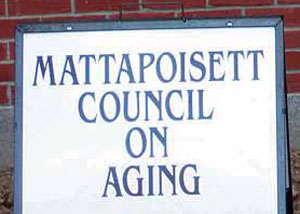Although its true origins have long since been lost, Raqs Sharqi – or belly dancing as it is called – is internationally popular. The number of belly dancing enthusiasts is growing as it is embraced for its health benefits.
An Arabic phrase meaning “dance of the Orient,” some of the threads of Raqs Sharqi’s history weave a story of a dance form from ancient Egypt, Turkey or India.
These dances were performed to express emotions or even to honor gods and deities through fluid movements of the female form. It is even thought that it may have evolved from birthing rooms where women came together to aid one of their own in the agony of pelvic contractions. The rotations of hips with breathing techniques may have been combined to ease the woman’s body and mind as the child was born. Common belief is it is a blend of all those sources. Like a rich exotic blend of aromatic spices, Raqs Sharqi has been seasoned through the ages.
In the mid-1800s, forms of belly dancing were introduced to the United States, most notably by a dancer known as “Little Egypt.” There were at least three women who, from the late 1800s through the 1920s, used that stage name.
The first woman to use the stage name was Fahreda Mazar Spyropoulos from Syria who brought to America something never before witnessed. It is said that when Mark Twain first attended a performance by Little Egypt, he nearly fainted.
Although we might be likely to think of belly dancing as an erotic versus exotic dance form, it has become a mainstream form of exercise offered in venues as diverse as children’s dance studios to councils on aging. And there are just as many forms of belly dancing as there are people enjoying the freedom of movement it offers.
Hiding in plain sight in Mattapoisett is a dancer of extraordinary talent who practices Raqs Sharqi, or belly dancing, every single day.
Ellie Mae Higgins was first introduced to belly dancing about 12 years ago as she pursued training in various dance forms. She is a certified group fitness instructor and, as such, has incorporated various types of dance forms into a program she calls “Groovercise.” Higgins sees the benefits of belly dancing – which she prefers to call Egyptian Dance – because it allows the joints to move smoothly and gently.
“It is so good for posture, confidence and improved body image,” said Higgins.
Higgins loves to teach and educated me recently about Egyptian dance, noting that it is referred to as the ‘happiness dance’ because it is danced to celebrate happy occasions. It is a dance that was created by and for women.
“It makes you feel amazing and it is very empowering for women,” she said with a delight that she could hardly contain. “Women of all shapes and sizes can dance this way because the moves come naturally to a woman’s body,” she pointed out.
And more than just dance and physical exercise, Higgins says that Egyptian dancing allows a woman to feel like a goddess. She pointed out that when a woman is dancing, she is standing tall, moving elegantly to music that’s either smooth and slow or upbeat and percussive, and which elevates the mind in a true body/mind experience that is good for the soul. The costumes worn by some practitioners are gorgeous creations of silks, lace, sequins, and tassels in every color and combination imaginable. “… A woman feels beautiful…” and that is important to Higgins.
For Higgins, it is now simply part of her world.
“I dance first thing in the morning,” she once declared to her class of devoted fitness students. There is rarely a class she teaches where she is not wearing one of her signature jingly hip scarves while slipping in a few Egyptian dance hip bumps or snake arm moves.
Yet, for all the beauty of the movements, Higgins understands that dancing offers health benefits. According to Higgins, belly dancing can gently increase the body’s range of motion, is beneficial to the lymphatic system, builds core strength, and helps relieve stress.She emphasizes it’s good for those just beginning a fitness program and with no previous dance experience.
From an early age, Higgins was exposed to music of all types with musical instruments in her childhood home and a father who taught her to play the piano.
“He was not formally trained, but he could play,” she wistfully remembered. She plays the guitar, percussion, piano, and is a singer as well. She was once part of several different duets and trios and partnered with her husband, Bill Reidy (a professional musician), for many years before becoming a fitness instructor. Higgins still does gigs with Bill from time to time. But her day job is teaching others how to move and use their bodies to strengthen their core muscles, achieve good balance, and improve their brain fitness. She understands the importance of staying strong as we age. One of her regular students said, “Ellie keeps me alive.”
Higgins teaches weekly Groovercise group fitness classes at the councils on aging in Mattapoisett, Marion, Acushnet and Rochester. She also teaches basic belly dancing for fun and fitness on Thursdays at 11:30 am at Mattapoisett’s COA. For a full schedule, contact the COA for days and times.
By Marilou Newell
